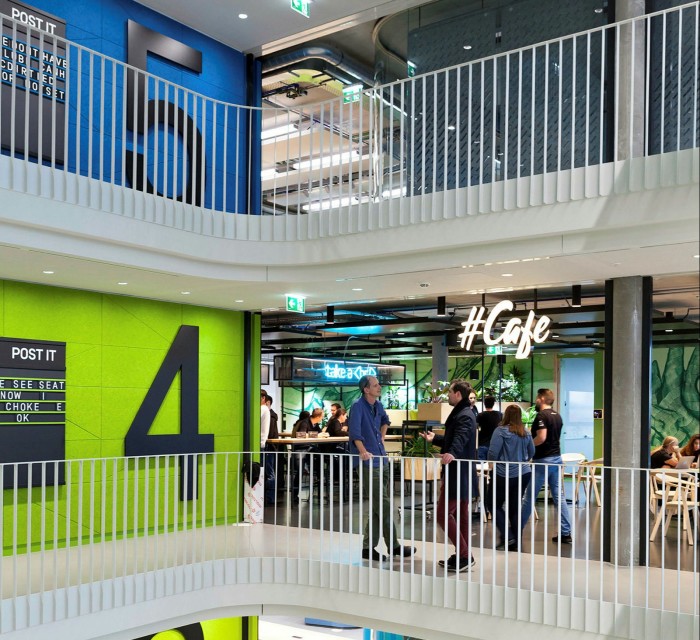Bernd Greifeneder: ‘I see Linz as like Silicon Valley’

Roula Khalaf, Editor of the FT, selects her favourite stories in this weekly newsletter.
It may surprise Silicon Valley to learn that one of America’s best-performing tech stocks of the past two years is, in fact, Austrian.
Dynatrace, a software company founded in Linz in 2005 — with the bulk of its tech operations still in the upper Austrian city — listed in New York in 2019. It is now worth $22bn.
Over the course of the pandemic, the group’s share price has risen 75 per cent, comfortably outperforming the likes of Alphabet, Apple, Facebook and Microsoft.
And that, says its chief technology officer and founder Bernd Greifeneder, is because Dynatrace profits from digital complexity.
The company uses artificial intelligence to scour software systems for glitches and bugs. As corporate and government systems have become more and more complex, so too has demand for Dynatrace’s technology: it is no longer possible for in-house, human teams of IT specialists to monitor, let alone find or fix, problems in software systems that are growing so fast.
“Eight years ago, Bank of America told us that a system of 17,000 servers was just about the most that they could possibly imagine — that was the height in terms of complexity,” Greifeneder recalls. But Dynatrace saw it differently. In 2014, shortly after the company was taken over by US private equity firm Thoma Bravo, Greifeneder decided it needed to think bigger. He told his software engineers they needed to think of a world in which companies were running server farms with 50,000 interconnected servers.
“As the years have passed, that turned out to be a good decision. Our largest customers are no longer in the 17,000 or 50,000 range but 200,000.”
The corporate world’s hunger for data, Greifeneder says, has outpaced the ability of the IT world to maintain system integrity. Even the best resourced IT departments in many companies would struggle to stay on top of systems involving more than 1,000 servers, he says.
The days when software patches were issued once or twice a year — or even every month — are over. Systems now need continuous, seamless updates because they have become so large — and their flaws have multiplied at an equal, if not greater, rate.
“Complexity in these systems has just increased exponentially . . . you can really think of it as having exploded in the past few years,” says Greifeneder. “Now, we are thinking about what a world will look like with data centres of over 1m servers.”
Dynatrace’s artificial intelligence system automates the process of finding problem areas in software systems, and triages the flaws to decide which are in urgent need of fixing — flagging them to human specialists. Ultimately, says Greifeneder, the goal is “a fully self-healing IT environment”.
Since listing, Dynatrace’s client base has doubled. In its second-quarter results, announced at the end of October, the company reported a 34 per cent year-on-year rise in revenue, and raised its full-year estimate to $919m — a 30 per cent annual increase.
Greifeneder says the company intends to plough even more money back into research. “I see our business in terms of a seven-year cycle,” he explains. “Seven years ago, we made a big decision on where the world was going to go, and now we are at a similar point.” Currently, Dynatrace employs 1,000 software and IT engineers and specialists. Greifeneder says the question today is: “How should we be operating with 3,000?”
A key challenge, he believes, is preserving the company’s agile and entrepreneurial spirit, that has so far stayed with it in its offices in Austria, thanks to its relatively small size.
He hopes to preserve a “fail fast” culture of experimentation and openness.
“We want an environment where anyone at any level can take a decision and act, but the rule is that they have to consult with everyone who might be impacted by that decision.”
When Dynatrace listed, the move to do that in the US was a big step but also, says Greifeneder, a natural one.
“We had to aim big for our future; I looked at Vienna and I did not want to list there,” he says. But, he adds, Austria is still where the heart of the company is, because so much talent and opportunity for business development remains in the country.
“I see Linz as being really quite like Silicon Valley,” Greifeneder suggests, citing the huge number of start-ups, research hubs and university facilities around Linz and along the Danube valley to Vienna.
Despite such advantages, one impediment to the development of tech and start-up businesses in Austria — and elsewhere in Europe — has been the relative underdevelopment of European capital markets, he says.
“Back when I started trying to raise money for Dynatrace, there was really not very much understanding at all in Europe of what we were doing, so we went to a US venture capital firm.”
That situation has changed, he says, but there are still differences. “The VC market in North America spends more money and expects a return much later — they go for customers and growth over profitability. Europeans go for profitability earlier and that can really limit opportunities.”
Comments